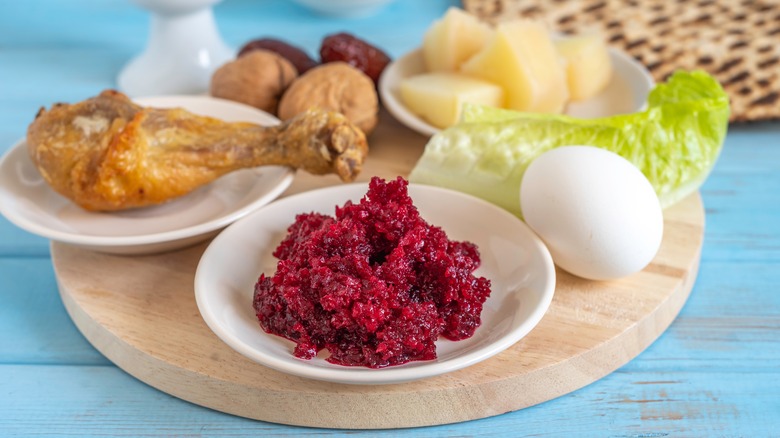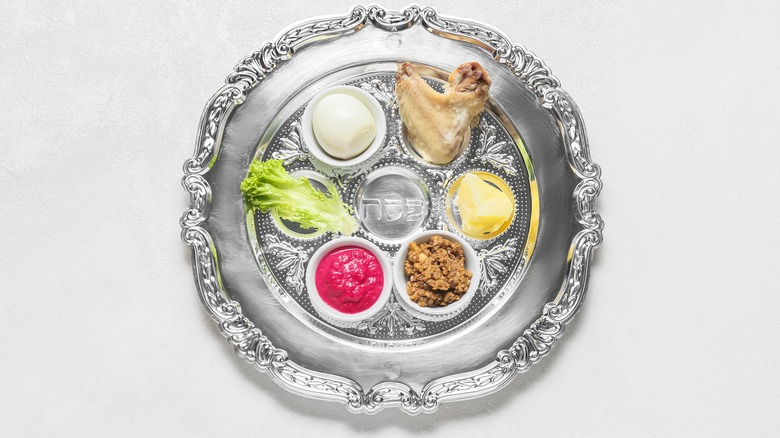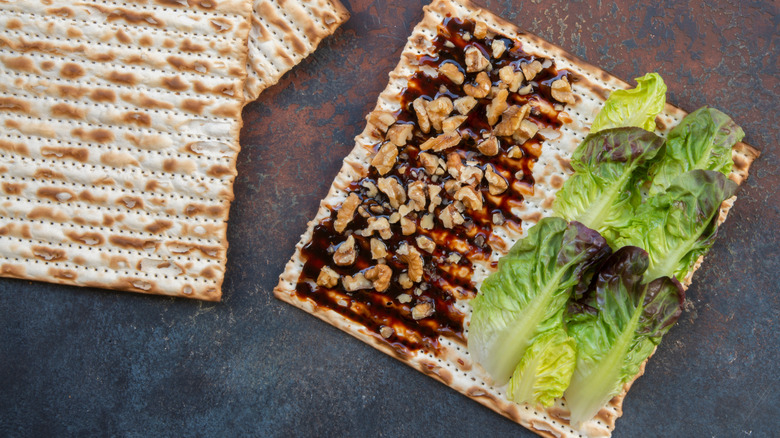How Exactly Is Maror Used During Passover?
The Passover holiday, celebrated by practitioners of Judaism, marks a central narrative in the Hebrew Bible. According to that religious text, Moses once freed the ancient Jews from enslavement in Pharaonic Egypt at God's behest. It is this miraculous escape that Passover commemorates.
Starting the festivities is the Seder meal. Different branches of Judaism observe it in various ways, but generally speaking, it consists of a few core elements. A Seder table typically includes wine, raw vegetables dunked into salt water or vinegar, a shank bone, a hard-boiled egg, and cracker-like matzo bread. Each item has its own meaning, and some may be more well-known than others; unleavened matzo, for example, is thought to have been carried by the Jewish people during their escape from Egypt because they had no time to let the bread rise. One element of the Seder that may be less well-known, though, or at least, not as commonly understood, is maror.
What is maror?
Maror directly translates to "bitter root" or "bitter herb." The term appears twice in the Torah — a religious text — but which particular root or herb this refers to is not specified. Later, in the Talmud — another religious text — rabbis stated maror should not only be bitter but also gray and sappy as well as a vegetable that grows from the ground itself, not a tree. The Talmud lists five possibilities for maror, but things sometimes get lost in translation, even with religious texts, so modern scholars aren't quite certain which foods were included.
Romaine lettuce is thought to be one of them, due to its bitter aftertaste as well as the gray sap of its outer leaves. Historically, some Jews might have eaten cardoon, eryngo, sea sow-thistle, and wormwood, too. Nowadays, celery and horseradish are often used, especially in the United States. Curly parsley, endive, and green onion may also qualify. In Israel, a wild-grown, leafy green that's known as prickly lettuce serves as yet another option, while Brazilian Jews sometimes use mustard greens or wasabi powder. Ultimately, the form maror takes often depends on what's available and the practitioners' spiritual beliefs.
Maror is eaten symbolically
Whatever form maror takes, it's an essential part of the Seder plate that takes center stage on the holiday table. The specific reason for eating maror during the Passover Seder is to symbolize the bitterness of the ancient Hebrews' enslavement. However, this bitterness can be applied to more than just that single religious narrative; maror also has the potential to represent the struggles of Jewish people in the modern era, depending on one's interpretation of this meaningful symbol.
Notably, maror is also dunked in a combination of crushed fruit and wine called charoset in order to represent the sweetness of liberation that's said to come from the sacrifices of suffering. Similarly, the maror and charoset are typically eaten together with matzo as a sandwich. "By sticking that maror in between the two pieces of matzo, it's like our tradition is saying don't give up, even on that maror," Rabbi Jay Rosenbaum told The Seattle Times.
Maror is but one of many Passover traditions from around the world. Yet, it's certainly not one to feel bitter about. In fact, understanding its symbolic significance makes maror a food worth savoring.


